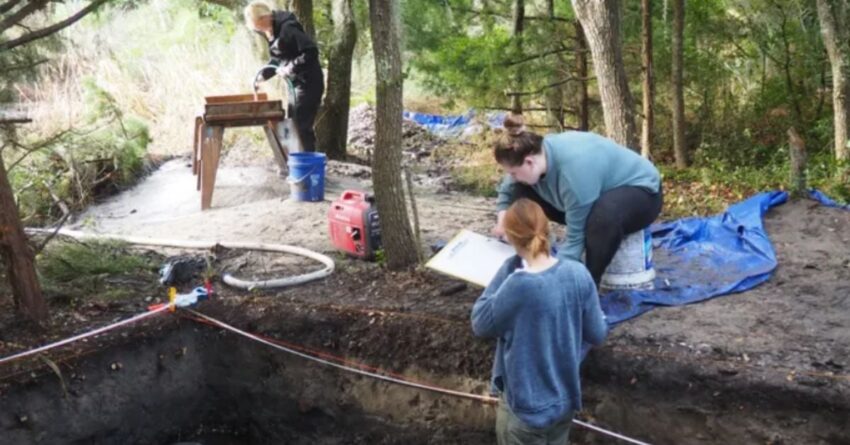A team of researchers claimed to have made significant strides in solving one of America’s oldest mysteries — the fate of the Roanoke Colony. More than four centuries after the settlement mysteriously vanished, new archaeological evidence suggests that the missing colonists may not have perished as previously presumed. Instead, they are believed to have integrated into the indigenous Croatoan society of Hatteras Island, North Carolina.
The Mystery of Roanoke

The Roanoke Colony, often referred to as the “Lost Colony,” was established in 1587 under the leadership of Sir Walter Raleigh. It became notorious following the unexplained disappearance of more than 100 settlers, including the governor John White’s daughter, Eleanor Dare, and his granddaughter, Virginia Dare, the first English child born in the Americas. When White returned to Roanoke in 1590 to resupply the colony, he found it completely abandoned, with the cryptic word “CROATOAN” carved into a post, leaving generations of historians scratching their heads over what could have happened.
Solving the Mystery

Mark Horton, an archaeology professor at the Royal Agricultural University in England, has dedicated years to investigating the Roanoke mystery. For the past decade, Horton has collaborated with Scott Dawson of the Croatoan Archaeological Society, digging into sites that hint at the colonists’ lives following their disappearance. Their findings center on a heap of refuse left by the Croatoan people on Hatteras Island — what researchers term “middens.” These trash heaps are not just remnants of daily life; they hold the key to unraveling the colony’s fate. In a recent interview, Horton reflected on the implications of their extensive research into the trash heaps and a metal found within, stating that “this is metal that has to be raised to a relatively high temperature … which, of course, [requires] technology that Native Americans at this period did not have.”
The Evidence

The discovery of hammerscale — small particles of iron produced during the forging process—has prompted a significant shift in the narrative. According to Horton, this serves as “definitive proof of iron-working on Hatteras Island,” something that could only have been done by the English colonists. “The key significance of hammerscale… is that it’s evidence of iron-working, of forging, at that moment,” he elaborated, suggesting that the settlers had a role in the indigenous community that had previously been overlooked.
Various Theories

Countering theories that claimed the colonists were either slaughtered by local tribes or succumbed to starvation, the new evidence favors a more hopeful scenario of survival and adaptation. Horton maintains that the stratification of the hammerscale supports the idea that the English settlers lived among the Croatoans shortly after their initial disappearance. “We found it stratified … underneath layers that we know date to the late 16th or early 17th century,” he explained, reinforcing the timeline of English assimilation into the local community. In addition to hammerscale, archaeologists have uncovered a variety of artifacts, including firearms, nautical fittings, engraved slate and even glass beads — further evidence that the colonists were not simply eradicated but likely continued to thrive in a new cultural context. The evidence gathered paints a vivid picture of the settlers’ lives post-Roanoke: “We have one little snippet of historical evidence from the 1700s, which describes people with blue or gray eyes who could remember people who used to be able to read from books,” Horton noted, suggesting that the lineage continued well into the 18th century. However, when pressed about whether this new evidence definitively solves the Roanoke mystery, Horton adopted a cautiously optimistic tone, stating, “Have we solved the mystery? Well, you know, it’s pretty good evidence, but there’s always more work to be done.” He acknowledged the timeless allure of the Roanoke tale, emphasizing that “people love mysteries. They hate resolving things one way or the other.”
The post Archaeologists Shed Light on Lost Colony Mystery appeared first on Knewz.
Click this link for the original source of this article.
Author: Joshua Wilburn
This content is courtesy of, and owned and copyrighted by, https://knewz.com and its author. This content is made available by use of the public RSS feed offered by the host site and is used for educational purposes only. If you are the author or represent the host site and would like this content removed now and in the future, please contact USSANews.com using the email address in the Contact page found in the website menu.







